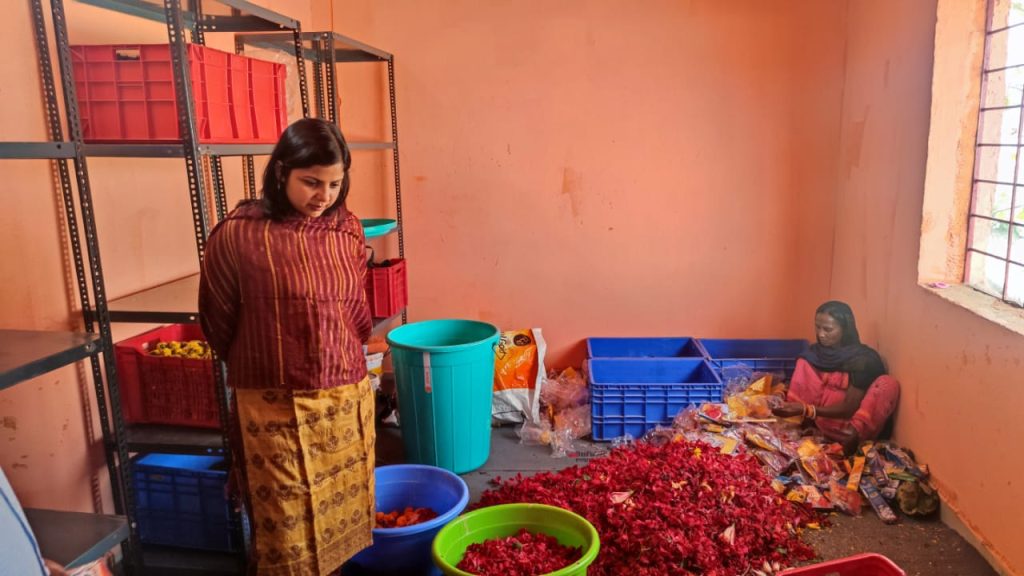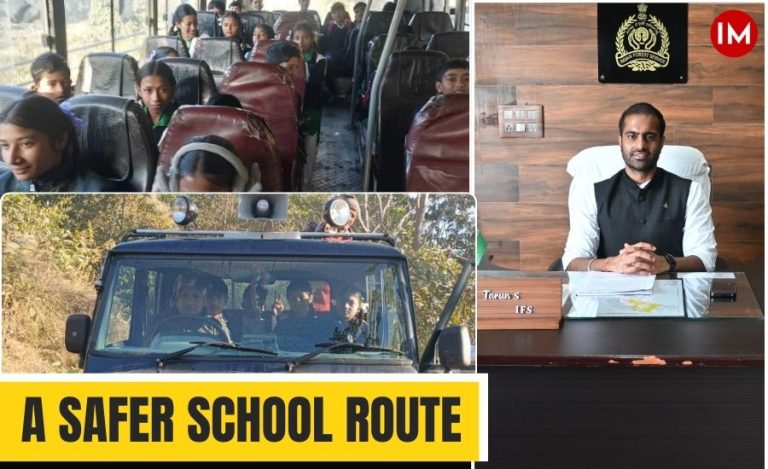India is the land of ancient temples, and lakhs of people visit these temples daily and offer various articles of devotion to the deities. But have we ever wondered where all these articles ultimately end up?
When the Deputy Commissioner of Ramgarh district in Jharkhand, IAS officer Madhvi Mishra visited the famous Rajrappa temple in the district, she was disappointed with the way the temple waste was being discarded.
In an exclusive conversation with Indian Masterminds, she talked about how she creatively changed the course of the waste and brought something productive out of it.

INTO THE RIVER
The Rajrappa temple of Ramgarh, situated at the confluence of the Damodar and Bhairavi rivers, is one of the most famous temples in the country. Lakhs of people visit the temple every day, especially during Navratri, to pray to its deity, Goddess Chinnamastika.
The devotees bring with them several articles for offering, such as bangles, aalta (red dye), flowers, sindoor, belpatra, etc. These offerings used to be disposed of at the intersection of the two rivers, resulting in polluting these water bodies.
“When I joined the posting, I witnessed this pollution of rivers myself. Ironically, Ramgarh is amongst the only four districts of Jharkhand that fall under the Government of India’s ‘Namami Gange Project’. We tried speaking to the purohit (priest) of the temple who shared that throwing temple waste into the river is a traditional practice and this is how they have been operating for decades. I wished to get rid of this practice as soon as possible,” Ms. Mishra told Indian Masterminds.

CONVERTING AND UTILISING
The officer came up with an idea to dispose of the waste that was both economical and sustainable. She appointed the temple’s cleaning staff to accumulate the waste and segregate it, which was done twice on a normal day and every hour during Navratri.
Once the segregation of flowers and belpatras was done, it was dried for hours, and further went through a semi-mechanized process, through which the flowers were converted into gulaal and different organic colors, and the belpatras were converted into agarbattis (incense sticks). Articles such as bangles, aalta, and other non-recyclable stuff were converted into decorative items and were later sold.

“There are hundreds of shops outside the temples. We collaborated with them, and they agreed to procure these agarbattis and sell them to the devotees who come for worship. They found the agarbattis’ quality to be much better than the ones sold in the market and, thus, the need for marketing the products was also eliminated as the products circle around in the temple premises itself,” Ms. Mishra said.
Through this initiative, the officer has also generated employment for over 40 women who are responsible for drying up the flowers, cutting, segregating, and processing them.

ELECTRICITY FROM GOAT REMAINS
The Rajrappa temple is also famous for bali or sacrifices. The devotees bring their goats to the temple and sacrifice them to the Goddess, after which the meat is treated as prasaad and distributed amongst the followers. The skin and blood remains are disposed of in the river.
In the second phase of her project, Ms. Mishra decided to get the skin and blood waste collected by channelizing it through a pipeline and collecting it in a tank. Furthermore, through the method of bio methanization, the goat remains are being converted into electricity!
“Obviously, the electricity procured is not of a very high magnitude but is enough to cater to the power required in the temple for lights, fans, and other needs. The major thing is that we are able to regenerate and reuse the waste,” she told Indian Masterminds.


Rajrappa temple is the first temple in Jharkhand to use the process of bio methanization to convert temple waste into organic items which can be reused and recycled.
Having worked as the Municipal Commissioner in Urban Development Department, Hazaribagh, previously, the project is especially close to the officer’s heart, and she is happy with how things have turned out. She believes that focusing on waste management should be an integral part of the administration, which requires utmost attention.
She appeals to the public to contribute to waste management, as well. After channelizing this program, she will further ensure that all the temples of Ramgarh transport their respective wastes to the processing plant set up near Rajrappa temple, for the production of organic stuff and the elimination of water pollution.

































